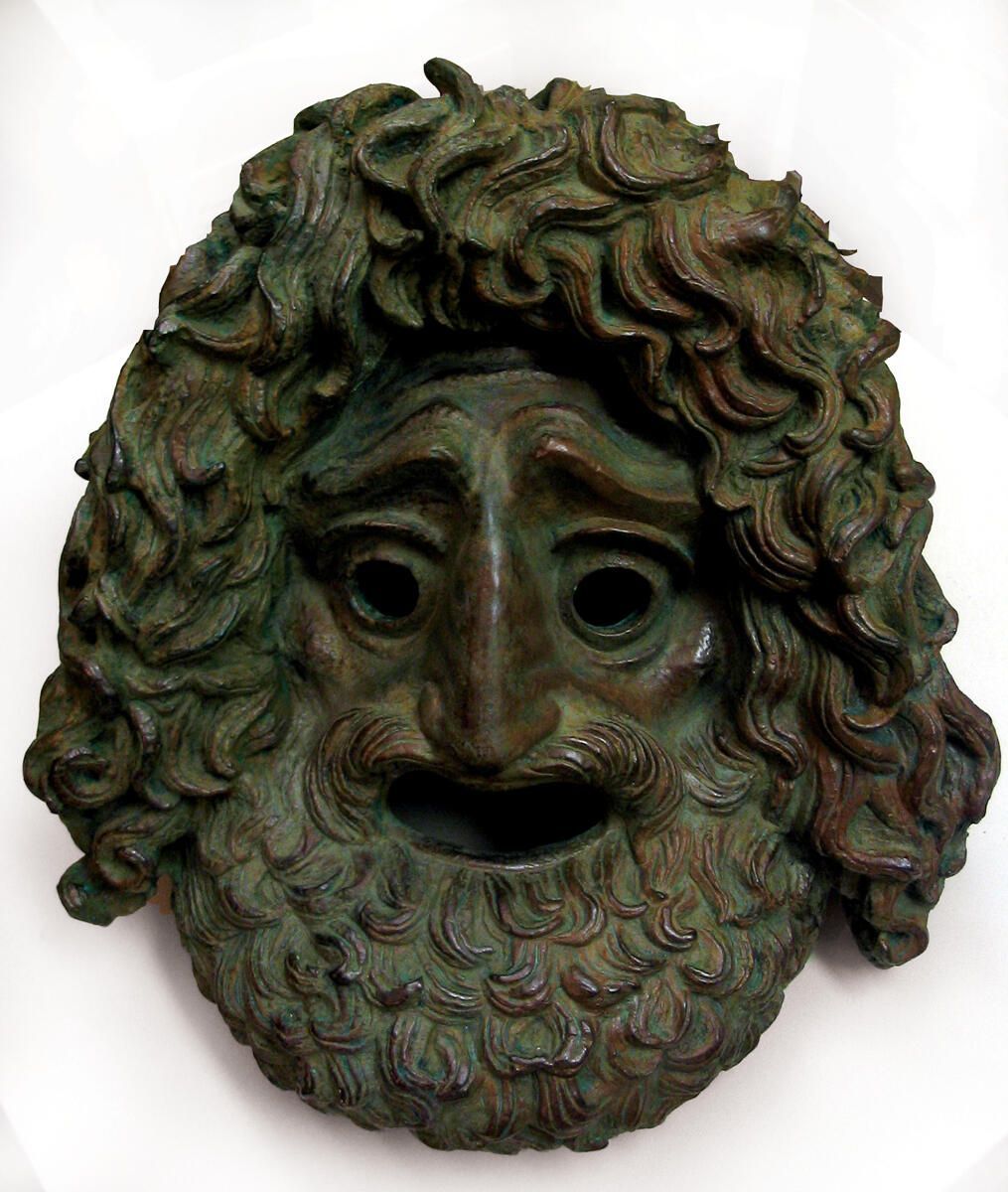Bronze Tragic Theatrical Mask
Name/Title
Bronze Tragic Theatrical MaskEntry/Object ID
02H0371Description
Tragic theatrical mask made of plaster with bronze patina. Open eyes and large open mouth hole. The mask is quite large, and was probably not meant to be carried.Type of Sculpture
OtherArtwork Details
Medium
PlasterContext
Greek tragic masks used to add depth and give a character a psyche or persona, primarily one of melancholy and dark foreshadowing. The masks draw their origins from the Cult of Dionysus, which the theatre was associated. Theatrical masks were said to have added resonance to the voice of an actor so that everyone in the theater could hear him. Greek plays generally had 1-3 male actors, so the masks were essential for the actors to portray different characters and females. The mask could also give the character a sort of universality, allowing audiences to judge him based on his actions.Made/Created
Date made
399 BCE - 300 BCETime Period
ClassicalEthnography
Culture/Tribe
Greek - Classical

